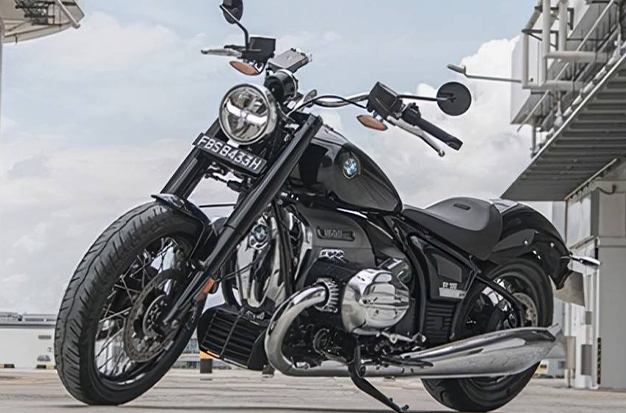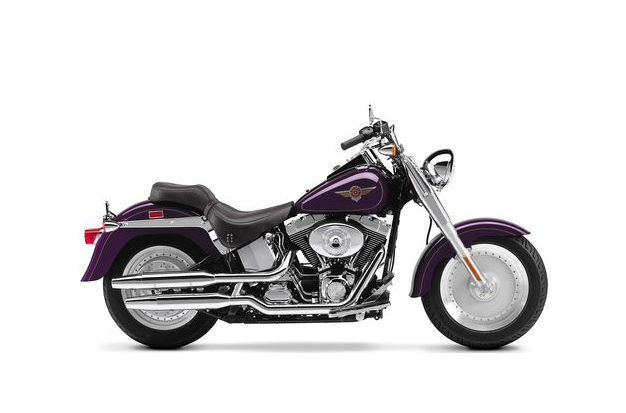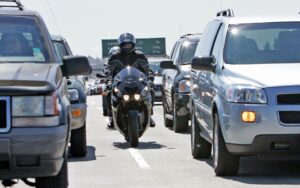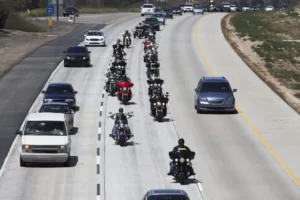A motorcycle that is improperly secured to your trailer when transporting will run the risk of shifting, toppling over, or even falling out while you’re driving down the road. Learn the right techniques to safely secure your motorcycle to a trailer while traveling. Picking the right trailer, securing your bike to it, and driving safely are all skills you should learn.
Transporting A Motorcycle Basics
The bike’s security is the first task; you don’t want your Precious to move once she’s been fastened. The best tools for the job are a number of tie-downs that can be attached to the motorcycle to pull it down and forward in the tow vehicle (ideally against a chock).
Tie-down straps are available in two varieties: ratchet or cam buckle. In order to keep the strap in place, cam buckles use friction created by the strap as it travels through a spring-loaded, cam-shaped buckle. Ratchet buckles allow you to gradually tighten the strap on ratchet straps, which function in a similar way. Both give you the ability to lock the bike yourself and tighten the suspension to lessen shock loading.
The bike’s suspension compresses as a result of shock loading, which happens when the vehicle transporting your bike hits a pothole. The tie-downs become slack when the suspension compresses, but they become taut again when it rebounds, which can eventually cause them to become loose or break. The suspension will compress less during towing if it is loaded more during tie-down. While some people contend that ratchet straps are more effective at maximizing compression, our shop manager claims that the cams are more convenient for him to use.
Transporting A Motorcycle With Tie-downs
Depending on the model you own, there are many different ways to secure your bicycle, but everyone agrees that the frame or another solidly mounted component of the frame should be used. For the majority of streetbikes, two ties up front and two on either side are sufficient, but if you’re feeling particularly paranoid, six ratchet tie-downs—four up front and two at the back—will provide the maximum security, even for a Boss Hoss.
Getting your truck or trailer as level as possible should be your first priority. As far as necessary to attach to your motorcycle and where you can reach them, extend the tie-downs from your floor or frame loops.
The lower triple tree is the most secure location for this setup, so if you’re using extension loop straps around it, have those ready as well. Push your bike directly into the wheel chock on the truck bed or trailer after positioning your ramp so it is parallel to it. If you’re not using a wheel chock, secure the front tire to the front of the bed by gripping the loose end of the strap and pulling or ratcheting down the S-hooks to a structural member on the bike.
Conventional wisdom dictates that when using straps, the left front tie-down, which is attached high on the bike, should be snugged up first to remove any slack. Repeat with the right front tie-down; the kickstand should now be off the ground and the bike should be standing straight.
Make sure the front tire and brake rotor sides are clear of the chock when the tie-downs are snug. Make sure the bike is vertical and the tie-downs are even and securely tightened by giving them one last pull.
If you’re loading two motorcycles and their handlebars or fairings clash, try flipping one of the bikes inside the trailer. To evenly distribute the load, it is typically best to load the largest bike first.
It’s time to strap the back for additional stability after you’ve secured the front. Select a high point on the chassis for the tie-downs to be attached to for leverage. To prevent the bike from rocking forward, backward, or sideways, the tie-downs should pull down a few inches in front of your attachment point. It is best to have someone compress the rear suspension while you tighten the tie-downs when using cam-buckle ties.
Verify that the tie-down points are secure; the straps should create a 45-degree angle between the bike and the ground.

Tools For Getting Your Motorcycle On A Trailer
Your tie-downs are a necessary item for securing your bike on a trailer. Ratcheting tie-downs, however, might be a bit excessive for your motorcycle; instead, choose ties that are robust and thick, with heavy-duty hardware, unless you already have these on hand.
While it’s important to keep your equipment functioning properly, you also don’t want to overspend on tie-downs when towing pickup trucks is not absolutely necessary. Ratchet straps are simple to compress, so they will work, but you can also choose an alternative that has a working load limit high enough to accommodate your bike.
Another useful tool for loading your bike is a wheel chock, especially if you’re working alone. While you secure everything, the wheel chock, which is either made of plastic or metal, will prevent the front wheel from moving.
For additional weather protection while transporting your motorcycle, consider using a tarp or motorcycle cover. As the tarp or cover is not load-bearing, you don’t need to ratchet the straps down quite as carefully as if you were attaching it to the trailer.
Watch where your straps are laid, including the ones on the tarp or other cover as well as the tie-downs. You don’t want metal or other abrasive substances to scratch the paint job of your bike or chew a hole in the seat. Avoiding cosmetic damage to your bike while traveling can be achieved by using clean rags or soft straps attached to your tie-downs.
How To Secure A Motorcycle On A Trailer?
It appears straightforward: simply load the motorcycle onto a trailer by rolling it up a ramp, fasten some ropes to it, and you’re ready to go. However, it’s not quite that easy, especially if you’ve never trailered a motorcycle before.
The first thing to keep in mind is that operating any vehicle with a trailer behind it is different from operating the car or truck alone. The driving experience won’t be the same as it was before the trailer, despite the fact that the majority of motorcycle trailers are relatively light.
Driving without your bike on it is a good opportunity to practice minimizing blind spots, learning when to stop when you have to reverse, and becoming familiar with how the added weight affects your car’s handling.
It’s time to load your bike onto the trailer once you’re sure you can control the car and the trailer. It’s simpler if you have a ramp, and many trailers come with one to make things easier. Getting the bike up the ramp is the next step, which can be easy or moderately difficult.
Many motorcycle riders have terrifying tales of crashing their bikes into their cars or removing them entirely from the trailer. However, it’s also true that using your muscles alone to climb a ramp with a 500-pound motorcycle is not always possible. If at all possible, push the motorcycle up the ramp rather than riding it up it while using a low gear.
When you turn off the bike, keep it in gear; this will make it less likely to roll away if it becomes detached from the tie-downs. Then get your tools ready to begin fastening everything to the trailer.
Securing Your Motorcycle On A Trailer: What Not To Do?
Also keep in mind that motorcycle values are influenced by more than just mileage. If you intend to sell the motorcycle you are transporting, even a minor ding or dent can lower the price. Take all necessary precautions to secure your bike on the trailer, as well as before and after transportation, for this reason.
Despite the fact that many online guides recommend it, most manufacturers advise against ratcheting straps on your handlebars due to the stress they place on them. Select another attachment point for the straps rather than strapping your handlebars and possibly bending or otherwise damaging them.
Although you should compress the front suspension to secure the bike, you don’t want to lower it all the way. Because ratcheting down the suspension too far can permanently harm the shocks, many trailers have built-in blocks to prevent you from going too low. To keep the bike from bouncing around and sustaining damage, about halfway should be adequate.
Last but not least, avoid balancing the bike in the trailer using the center stand, even though it may seem straightforward because it makes your bike level. You’re only making the bike more unstable by raising the center of gravity, which makes it more likely to wobble and sustain significant damage if it tips over.
Tips For Securing A Motorcycle On A Trailer
For maximum security, you should aim for four tie-down points with any type of bicycle. At the front and back, there should be two tie-down points each. The most stable method is to use an X pattern, and it is better to attach the straps high on the bike than low.
Use the kickstand on your bike to hold it upright as you begin to attach the tie-downs. The stand will prevent the bike from slipping out from under you as you tighten everything down. Once one side is secured, you can pull the bike vertically.
Remember the overall weight of your motorcycle as well as the rated capacity of your equipment. In order to prevent a tie snapping while you’re driving, your tie-downs should, for example, be able to handle the weight of the bike.
You want to at least partially compress the front suspension of your motorcycle as you tighten the ties (but not completely). By doing this, you can minimize wobble and guarantee that your vehicle won’t move while you’re driving uphill or downhill.
Of course, the steps for tying down a two-wheeled bike will be slightly different from those for a three-wheel motorcycle. However, even though you won’t require a kickstand to maintain balance while tightening it, the same guidelines still apply.
Tips For Transporting Your Motorcycle
Since we’ve talked about how to transport a motorcycle in this article, I’d like to add some advice you should be aware of. These are advice I’ve picked up over the years of riding a motorcycle.
If you are towing your motorcycle behind a car, you can use a trailer, tow dolly, etc. make sure to know your car’s towing capacity beforehand. It ought to be visible on a sticker inside the passenger door. You should factor in the number of passengers and any luggage you plan to bring when calculating the weight of the vehicle being towed.
No matter how you are transporting a motorcycle, it’s always a good rule of thumb to stop every 50 – 75 miles to inspect the motorcycle and make sure it is secure. Glancing at it through your side or rearview mirrors may lead you to believe it is secure, but appearances can be deceptive. When it comes to this, it’s better to be safe than sorry.
Drive as if other drivers in your vicinity are unaware that you are towing a motorcycle. Before changing lanes, give other vehicles plenty of room and double-check your blind spots. To avoid shaking the motorcycle too much, move more slowly than usual.
Never fully compress the shocks when securing a motorcycle, also referred to as bottoming out. It’s beneficial to compress the shocks a little, but never more than 50%.
Avoid the following when transporting your motorcycle:
- Use the rear bag guards as attachment points; they will be yanked off.
- Long handlebars should be tied down at the end. This is acceptable to some dealers, but it is not acceptable to us because some handlebars are rubber mounted and may compress, resulting in tie-down slippage.
- Choose the cheapest straps. The money you saved by purchasing budget straps will not even come close to covering the cost of fixing your bike.



